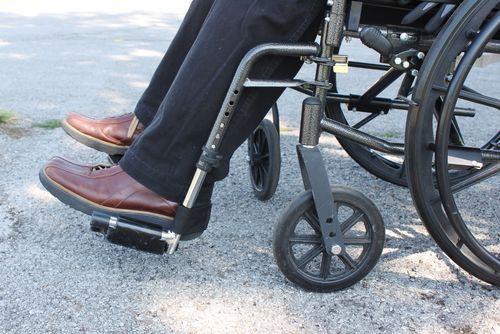Gene Responsible For ALS And FTD Can Be Targeted With New Drug; Researchers Discover Biomarker To Track Disease Progression

Researchers have developed a new medical intervention that can stop genetic elements from turning into potential risk factors for development of neurodegenerative disorders, amyotrophic lateral sclerosis (ALS or Lou Gehrig's disease) and frontotemporal dementia (FTD).
The research from Mayo Clinic and The Scripps Research Institute in Florida was published Thursday in the journal Neuron. Along with developing the new therapeutic strategy, the researchers have also identified a biomarker that has the potential to track disease progression and the efficacy of therapies.
Each year around 5,000 people in the United States are diagnosed with ALS. It’s a progressive, degenerative disease that affects nerve cells in the brain and spinal cord. As the disease progresses, patients lose control over their muscle coordination, speech, swallowing, and respiratory function due to death of motor neurons. Around 20 percent of people with ALS will develop FTD, a progressive brain disorder that affects personality, behavior, and verbal communication.
When ALS occurs in people with a family history of the disease, it is described as familial ALS. Familial ALS is generally caused by mutations to a number of genes, including the C9ORF72 gene. An earlier study by Mayo Clinic investigators found that this mutation produces long and tangled sequences of the messenger RNA in brain cells and spinal cord. This build-up and clumping of abnormal RNA is thought to be one of the reasons for neuron degeneration.
The small-molecule drug compound developed by scientists in the current research targets these toxic RNAs. "Our study shows that toxic RNA produced in people with the c9FTD/ALS mutation is indeed a viable drug target," said the study's co-senior investigator, Leonard Petrucelli, in a press release.
These abnormal RNAs are formed before the formation of toxic proteins, long thought to be responsible for the neurodegeneration that occurs in C9ORF72-related disorders (c9FTD/ALS). The compound, which was tested in cell culture models of c9FTD/ALS, bound to and blocked RNAs' ability to interact with other key proteins, thereby preventing the formation of toxic RNA clumps and "c9RAN proteins" that results from a process called repeat-associated non-ATG (RAN) translation.
The researchers could also measure levels of c9RAN proteins produced by the abnormal RNA in the spinal fluids of ALS patients. They are now trying to find if these proteins are present in the spinal fluids of patients with FTD as well.
"Development of a readily accessible biomarker for the c9FTD/ALS mutation may aid not only diagnosis of these disorders and allow for tracking disease course in patients, but it could provide a more direct way to evaluate the response to experimental treatments," said coauthor Dr. Kevin Boylan.
For example, if targeted therapy is able to break down clumps of these proteins, then a measure of the level of proteins can be an indicator of whether the therapy is working or not. "The potential of this biomarker discovery is very exciting — even if we are in early days of development of such a test," he said.
These findings are a huge step forward in the treatment of familial ALS and FTD, as currently there are no other treatments available and the prognosis for the disease is very poor. Generally, patients survive only two to five years after being diagnosed.
Source: Petrucelli L, Boylan K, Disney M, et al. Discovery of a Biomarker and Lead Small Molecules to Target r(GGGGCC)-Associated Defects in c9FTD/ALS. Neuron. 2014.
Published by Medicaldaily.com



























